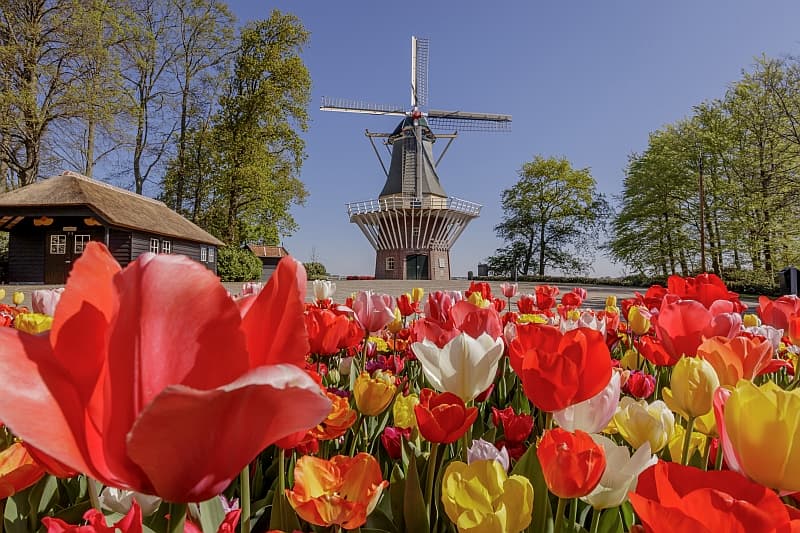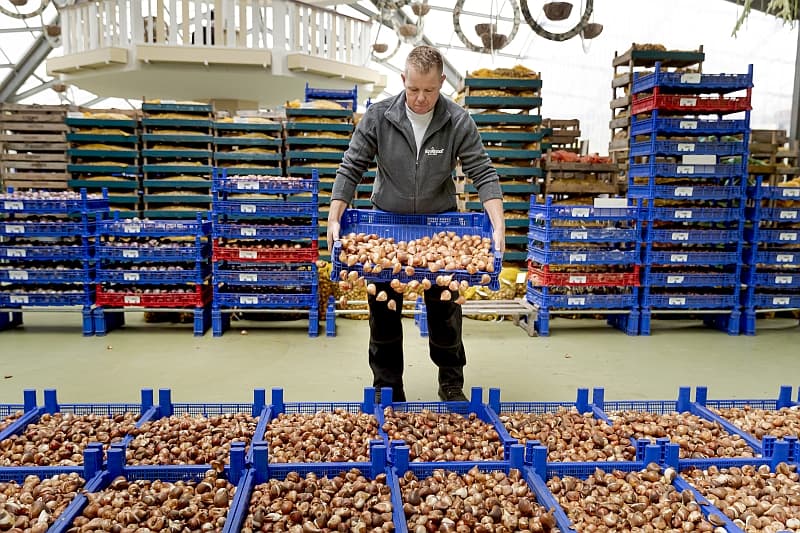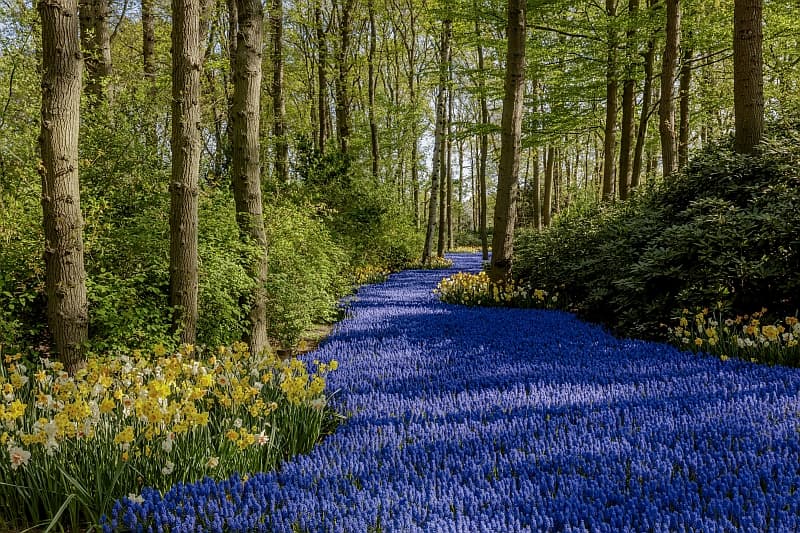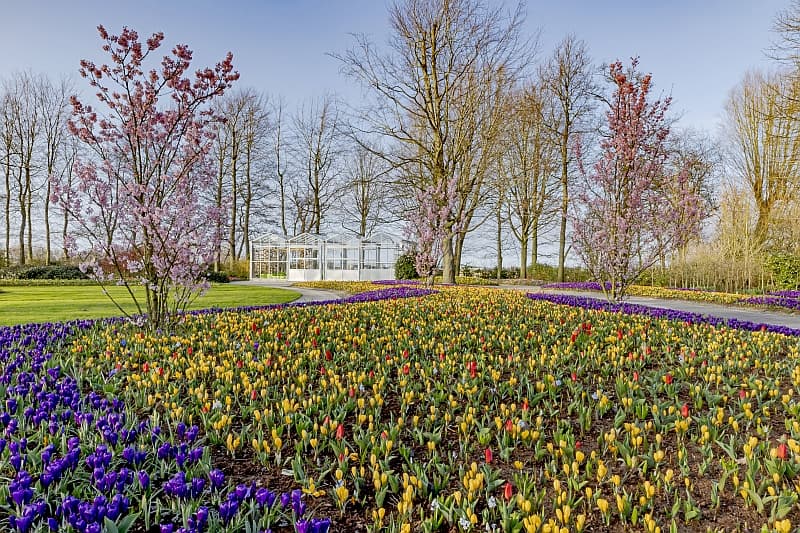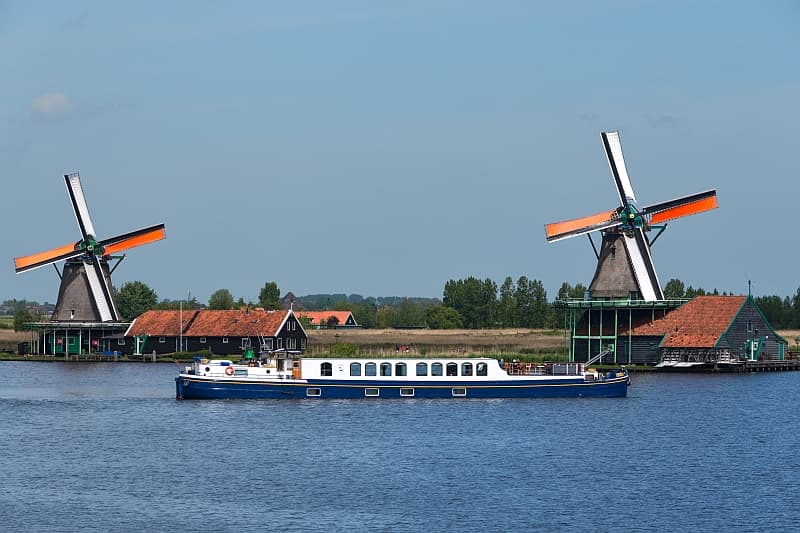Why Everyone Should Visit Keukenhof Gardens at Least Once in their Lives!
If it’s destination gardens that you’re looking for, then look no further than the world-famous Keukenhof gardens in Holland. Receiving over one million visitors every year, Keukenhof gardens is known as the ‘Garden of Europe’ for its terrific tulip displays.
Holland is notorious for its horticultural prowess and is the world’s primary exporter of flowering plants and bulbs. At Keukenhof gardens, high standards of horticulture are upkept to produce a sparkling showcase of budding spring splendour every single year.
Where is Keukenhof Gardens?
Keukenhof gardens is a thirty-minute journey from Amsterdam to a small area called Lisse, in the Netherlands.
How Big is Keukenhof Gardens?
Best known for the marvellous tulip displays that fill its grounds with spring colour, Keukenhof tulip gardens are the largest flower gardens in the world. With grounds of 32 hectares, the land was once part of Keukenhof Castle’s 200-hectare estate.
How was Keukenhof Gardens founded?
Keukenhof gardens date back to the fifteenth century and are first mentioned in accounts about Countess Jacoba van Beieren, who gathered fruit and vegetables there for the kitchens of Teylingen Castle. The location was used to cultivate herbs, berries, and domesticated cattle and the land doubled up as a hunting ground for game.
The whole area was previously called a ‘keukenduin’, which translates directly into English as ‘kitchen dune’. ‘Keuken’ is the Dutch word for ‘kitchen’, and it seems likely that the area was what the English would call a ‘kitchen garden’. The continued usage of ‘keuken’ when referring to this location certainly gave Keukenhof gardens its present name. In fact, some Dutch nationals still get confused about the name of the gardens and think that they are about kitchens!
Keukenhof Castle was built in 1641 on 200 hectares. The original gardens were redesigned in 1857 by Jan David Zocher, and his son, Louis Paul, who also landscaped Amsterdam’s Vondelpark. Keukenhof gardens were heavily influenced by English landscaping and are laid out in a similar style.
Since their founding in 1949, the grounds have become known as the ‘Garden of Europe’, after 20 leading Dutch flower growers took them over to exhibit spring-flowering bulbs. These growers transformed Keukenhof gardens into what you see today.
What can I See at Keukenhof Gardens?
Since 1950, visitors to Keukenhof gardens have been able to observe the beauty of spring flowering bulbs between March and May every year. The gardens are planted annually with a variety of over 7 million flower bulbs that blossom for a short period of time during the spring season. When Keukenhof gardens open in March, there are daffodils, hyacinths, tulips, and crocuses flowering, alongside varieties of shrubs and perennials.
The most famous Dutch plant of all is the tulip, and Keukenhof has fields planted full of them. Guests to Keukenhof gardens can wander through swathes of these vibrant plants as they gaze on to horizons filled with bright shades of yellow, red, and purple. It’s highly likely that you’ve come across images of the iconic tulip fields without even realising!
Each year, Keukenhof gardens becomes the venue for over one hundred bulb companies to exhibit their range of spring flowering plants. The seasonal landscaping is undertaken by a special in-house team, who create an impressive display for each company based on the colour, height, and flowering time of each plant. Visitors to Keukenhof gardens experience the result, which is a living catalogue of the bulbs!
Additional landscaped gardens that visitors can see at Keukenhof are the Reconnection Garden, which highlights sustainability, and the Red Romance Garden. The Tropical Beach Garden features palm trees, hammocks and planted boats and The Green Tea Garden displays a fragrant arrangement of different herbs like mint, lemon balm, camomile, and aniseed. The Cottage Garden showcases wild plants and bulbs for visitors to enjoy. The gardens also contain 25 sculptures that were commissioned to compliment the landscaped flower gardens.
Furthermore, Keukenhof gardens boasts an exhibition of cut flowers and pot plants produced by five hundred more growers at twenty different flower shows throughout the season. Four pavilions in the Keukenhof gardens showcase tulips, hyacinths, daffodils, orchids, roses, carnations, irises, lilies and many more varieties of plants.
Why is the Netherlands so famous for tulips?
Tulips are thought to be native to the mountain ranges of central Asia but were first introduced to the Netherlands towards the end of the 1500s. Soon after the symmetrical spring flower arrived in Holland, it became a must-have commodity. Dutch citizens prized tulips so highly for their depth of colour and beauty. As the demand for them increased, they started to be worth more than gold and at the height of their popularity, they were sold for more than ten times the annual salary of a common labourer!
By the late 1600s, ‘Tulip Mania’ had set in and the Dutch had become besotted with tulips. Extravagant designs for tulipier vases had been invented and immortalised in traditional blue and white delft pottery. These tulip vases allowed the upper classes to display cut tulips in a fashionable home setting, where they could be admired by visitors. Tulip bulbs had become so prolific by the 1700s, that they could be purchased and traded for planting as garden decoration.
Though the tulip craze in the Netherlands ended as quickly as it had started, Holland is still the largest commercial exporter of tulip bulbs in the world. Each year, more than three billion tulip bulbs leave the country to be sold! The Netherlands still celebrates its tulip heritage with an annual festival every spring. Visitors to Keukenhof gardens can enjoy millions of tulips on display and take photographs of the vast expanse of colour that fills the grounds.
What is the Best Time to Visit Keukenhof Tulip Gardens?
Keukenhof tulip gardens are only open between mid-March and May each year, so visitors are best booking in advance, to avoid disappointment. The tulips are at their best in April and May, so make sure you don’t miss them.
Visitors hoping to see flowers later in the year can still visit Keukenhof Castle Garden, where they can enjoy over 150 different types of dahlias growing from August through October.
How do I Get to Keukenhof Gardens?
Barge the quiet canals of the Netherlands with European Waterways aboard Panache or La Nouvelle Etoile. Mooring at Haarlem, you will have the opportunity to take a short journey over to Keukenhof tulip gardens.
For more information on our cruises in Holland, and the rest of our collection of luxury hotel barge cruises, why not order a free copy of our brochure or speak to a member of our team directly using our handy Contact Form.
 English
English
 Spanish
Spanish French
French German
German Norwegian
Norwegian Portuguese
Portuguese Swedish
Swedish Italian
Italian Russian
Russian Simplified Chinese
Simplified Chinese Japanese
Japanese
